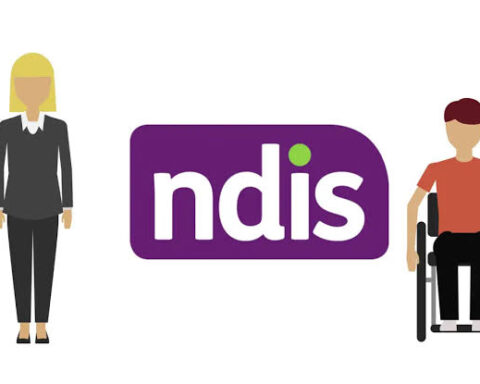Melasma is a common skin condition that causes dark, discolored patches to appear on the skin, often on the face. These patches can be a source of frustration and low self-esteem for many individuals. While melasma is harmless from a health standpoint, its impact on appearance makes it a condition that many people seek treatment for. One of the most effective treatments for melasma is Tri-Luma Cream. This prescription-strength cream is designed specifically to tackle melasma and help patients regain clear, even-toned skin.
In this comprehensive guide, we will explore what Tri-Luma Cream is, how it works, its ingredients, the benefits of using it for melasma treatment, potential side effects, and how to use it effectively. We’ll also discuss who can benefit the most from this treatment and what results you can expect from consistent use.
Understanding Melasma
Before we dive into the specifics of Tri-Luma Cream, it’s essential to understand melasma itself. Melasma is a form of hyperpigmentation that causes brown, gray-brown, or darker patches to appear on the skin. These patches usually develop on the face, particularly on the cheeks, forehead, bridge of the nose, chin, and upper lip. In some cases, melasma can also affect other areas of the body, especially those exposed to sunlight, such as the forearms and neck.
Causes of Melasma
The exact cause of melasma is not fully understood, but there are several factors that are believed to contribute to its development:
- Sun Exposure: UV rays from the sun stimulate the production of melanin, the pigment responsible for skin color. Overexposure to the sun can lead to an overproduction of melanin in certain areas, resulting in melasma.
- Hormonal Changes: Melasma is often referred to as the “mask of pregnancy” because it commonly occurs in pregnant women due to hormonal fluctuations. Hormonal contraceptives and hormone replacement therapy can also trigger melasma.
- Genetic Predisposition: Individuals with a family history of melasma are more likely to develop the condition.
- Skin Type: People with darker skin tones are more susceptible to melasma, as they naturally produce more melanin.
Symptoms of Melasma
Melasma is characterized by its unique dark patches, but it’s essential to know that it doesn’t cause any physical symptoms like itching or pain. It is purely a cosmetic concern, but for many individuals, these patches can be distressing and negatively affect self-esteem.
What Is Tri-Luma Cream?
Tri-Luma Cream is a prescription-only topical treatment specifically formulated to treat melasma. It is the only FDA-approved triple-combination cream for this condition. Tri-Luma contains three active ingredients that work synergistically to target the underlying causes of melasma and improve skin tone.
The Three Active Ingredients in Tri-Luma
- Hydroquinone 4%: Hydroquinone is a powerful skin-lightening agent that works by inhibiting an enzyme called tyrosinase, which is responsible for melanin production. By reducing melanin production, hydroquinone helps lighten dark spots and hyperpigmentation.
- Tretinoin 0.05%: Tretinoin is a form of vitamin A that increases skin cell turnover. This ingredient helps exfoliate the skin, removing dead skin cells and promoting the growth of new, healthy skin cells. It also enhances the absorption of hydroquinone, making it more effective in treating melasma.
- Fluocinolone Acetonide 0.01%: Fluocinolone is a mild corticosteroid that reduces inflammation and redness in the skin. It helps to calm the skin and prevent irritation that might result from the use of hydroquinone and tretinoin.
If you’re considering a treatment like Tri-Luma, you can explore more about Tri-Luma RD Cream and its triple-combination formula for melasma.
How Does Tri-Luma Cream Work?
Tri-Luma Cream works through a multi-faceted approach to treat melasma. Each of the three active ingredients plays a unique role in targeting the different aspects of melasma:
Lightening Dark Spots
Hydroquinone is the primary ingredient responsible for lightening dark patches. It works by blocking the enzyme tyrosinase, which is crucial for the production of melanin. When melanin production is reduced, the dark spots caused by melasma gradually fade, resulting in a more even skin tone.
Increasing Skin Cell Turnover
Tretinoin promotes faster skin cell turnover, meaning that the skin sheds old cells more quickly and replaces them with new ones. This process helps to fade hyperpigmented areas and smooth the texture of the skin. By increasing cell turnover, tretinoin helps remove melanin-filled cells from the surface and promotes the development of fresh, unpigmented skin.
Reducing Inflammation
Fluocinolone acetonide acts as an anti-inflammatory agent that helps reduce any irritation or redness caused by the active ingredients. Melasma can sometimes be accompanied by inflammation, and the use of tretinoin and hydroquinone may exacerbate this. The addition of fluocinolone ensures that the treatment is more tolerable and minimizes irritation.
The Benefits of Using Tri-Luma Cream for Melasma Treatment
Tri-Luma Cream is considered one of the most effective treatments for melasma due to its unique triple-combination formula. Some of the benefits include:
Targeted Treatment for Melasma
Tri-Luma is specifically designed to treat melasma, unlike many other skin-lightening products that may be used for various forms of hyperpigmentation. Its combination of ingredients is tailored to address the unique challenges of melasma, including hormonal and sun-related triggers.
Fast-Acting Results
Patients using Tri-Luma typically begin to see results within a few weeks, although it may take up to eight weeks for full results to be visible. The hydroquinone and tretinoin work relatively quickly to lighten dark spots and promote skin cell renewal.
FDA-Approved for Melasma
Tri-Luma is the only FDA-approved combination cream for melasma, which means it has been clinically tested for safety and efficacy in treating this specific condition. Its effectiveness has been demonstrated in various studies, and it is a trusted option for dermatologists treating melasma.
Minimal Irritation Due to Corticosteroid
One of the concerns with using hydroquinone and tretinoin is that they can cause irritation, especially when used together. However, the inclusion of fluocinolone acetonide in Tri-Luma helps minimize irritation and inflammation, making it more tolerable for sensitive skin.
Improves Overall Skin Tone and Texture
Beyond treating melasma, Tri-Luma Cream can improve the overall appearance of the skin. The tretinoin component helps exfoliate dead skin cells, leaving the skin smoother and more radiant.
How to Use Tri-Luma Cream
Using Tri-Luma Cream correctly is essential for achieving the best results and minimizing potential side effects. Since it is a prescription-strength treatment, you should always follow your doctor’s instructions. Below is a general guide on how to use the cream effectively:
Prepare Your Skin
Before applying Tri-Luma, wash your face with a gentle cleanser and pat your skin dry. Avoid using any other topical treatments, harsh cleansers, or exfoliating products before applying the cream, as these can increase irritation.
Apply a Thin Layer
Apply a small amount of Tri-Luma Cream to the areas affected by melasma, such as the cheeks, forehead, and chin. Be sure to avoid the eyes, mouth, and any open wounds or irritated areas. You only need a small amount—about the size of a pea—because the cream is potent.
Use Once Daily
Tri-Luma should be applied once daily, typically at night. Using it in the evening allows the active ingredients to work while you sleep, minimizing the risk of sun exposure, which can worsen melasma.
Apply Sunscreen in the Morning
Sun protection is crucial when using Tri-Luma Cream, as hydroquinone and tretinoin can make the skin more sensitive to UV rays. Be sure to apply a broad-spectrum sunscreen with at least SPF 30 every morning, even on cloudy days. Avoid prolonged sun exposure and wear protective clothing, such as a hat, when outdoors.
Be Patient
While you may start seeing results within a few weeks, full improvement may take up to eight weeks. Consistency is key, so continue using the cream as prescribed, even if your melasma begins to fade.
Potential Side Effects of Tri-Luma Cream
Like all medications, Tri-Luma Cream can cause side effects in some users. While it is generally well-tolerated, especially with the inclusion of fluocinolone to reduce irritation, there are a few potential side effects to be aware of:
Skin Irritation
Some users may experience mild skin irritation, including redness, dryness, peeling, or stinging, particularly in the first few weeks of use. These symptoms are usually temporary and subside as the skin adjusts to the active ingredients. If irritation persists, you should consult your healthcare provider.
Increased Sensitivity to Sunlight
Hydroquinone and tretinoin can make the skin more sensitive to sunlight, increasing the risk of sunburn. It is essential to use sunscreen daily and avoid direct sun exposure while using Tri-Luma Cream.
Allergic Reactions
Although rare, some individuals may experience an allergic reaction to one of the ingredients in Tri-Luma. Symptoms of an allergic reaction include severe itching, swelling, or a rash. If you experience any of these symptoms, stop using the cream immediately and seek medical advice.
Skin Discoloration
In rare cases, hydroquinone can cause exogenous ochronosis, a condition where the skin becomes discolored and bluish-gray. This is more likely to occur with prolonged use of hydroquinone over many years, so it’s important to use Tri-Luma Cream only as directed by your doctor and not for extended periods.
Who Should Avoid Using Tri-Luma Cream?
While Tri-Luma Cream is highly effective for many individuals, it is not suitable for everyone. Certain groups of people should avoid using this cream or consult their healthcare provider before starting treatment:
- Pregnant or Breastfeeding Women: The safety of Tri-Luma Cream during pregnancy or breastfeeding has not been established. Women who are pregnant or nursing should avoid using this product unless prescribed by their doctor.
- Individuals with Sensitive Skin: If you have sensitive skin or conditions like eczema, Tri-Luma may cause increased irritation. Always consult with your dermatologist if you have any skin sensitivities.
- People with Certain Skin Conditions: Those with a history of skin cancer, eczema, or other chronic skin conditions should consult a doctor before using Tri-Luma.
How Long Can You Use Tri-Luma Cream?
Tri-Luma is typically prescribed for short-term use. Most doctors recommend using the cream for about 8 to 12 weeks, as long-term use of hydroquinone can increase the risk of side effects, such as ochronosis. If your melasma has not improved after three months of treatment, your doctor may suggest discontinuing the use of Tri-Luma and exploring other treatment options.
Once melasma has improved, it’s essential to maintain a skincare routine that includes sunscreen and gentle, non-irritating products to prevent melasma from returning.
Alternatives to Tri-Luma Cream
While Tri-Luma is highly effective for many individuals, it may not be the best option for everyone. There are alternative treatments for melasma that may be more suitable, depending on your skin type and the severity of your condition.
1. Azelaic Acid
Azelaic acid is a topical treatment that is often used to treat melasma and other forms of hyperpigmentation. It works by inhibiting the production of melanin, similar to hydroquinone, but is generally gentler on the skin and less likely to cause irritation.
2. Chemical Peels
Chemical peels can help reduce the appearance of melasma by exfoliating the top layer of skin and promoting the growth of new, healthy skin cells. Glycolic acid and lactic acid peels are commonly used for treating hyperpigmentation.
3. Laser Treatments
Laser treatments, such as fractional lasers or intense pulsed light (IPL) therapy, can target the deeper layers of the skin to reduce melasma. These treatments are typically more invasive than topical treatments and should be performed by a dermatologist or licensed practitioner.
4. Topical Retinoids
If you cannot use Tri-Luma due to sensitivity to hydroquinone, topical retinoids like tretinoin alone may help improve the appearance of melasma by promoting skin cell turnover and reducing pigmentation.
Conclusion: Is Tri-Luma Cream Right for You?
Tri-Luma Cream is a highly effective treatment for melasma, offering a unique combination of three active ingredients that target the root causes of this condition. For individuals dealing with persistent melasma that hasn’t responded to over-the-counter treatments, Tri-Luma provides a powerful solution that can improve skin tone and reduce dark patches in a relatively short period.
However, like all medications, Tri-Luma should be used under the guidance of a healthcare provider. It’s crucial to follow your doctor’s instructions closely, apply sunscreen daily, and be aware of potential side effects.
If you’re dealing with melasma and want to explore the benefits of Tri-Luma Cream, consult with your dermatologist to see if this treatment is the right choice for you. With consistent use and proper care, Tri-Luma can help you achieve clearer, more even-toned skin, allowing you to feel confident in your appearance again.
Stay in touch to get more news & updates on Essentialtribun.!








